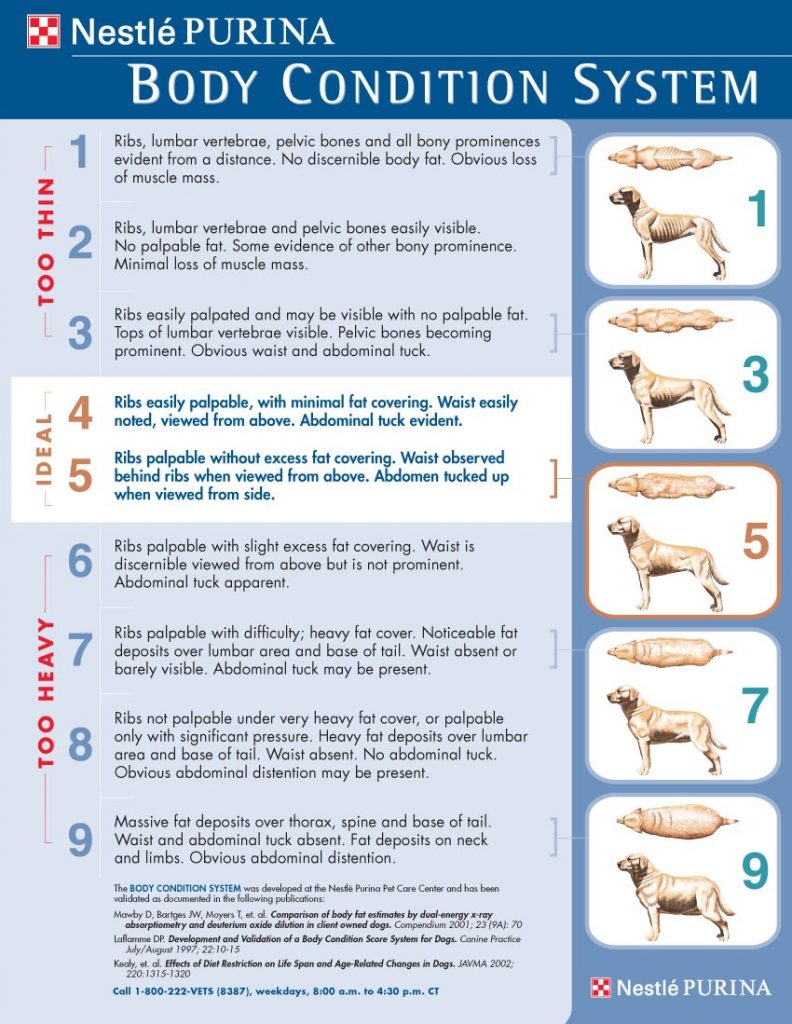If you have just adopted a fluffy poodle puppy or are planning to add an adorable mutt to your family, you need to know the weight and size he would gain when fully grown. Maintaining a healthy weight is just as important for your dog as it is for us humans. The average dog weight range differs for different dog breeds. Then, some dogs are mixed-bred. If you own a rescue dog, having complete information about its breed can be difficult as you wouldn’t know about its parents.
Now a first-time dog owner may be wondering, how would I know the expected weight and size of my dog? How heavy should my dog be? What can I do to help my dog maintain a healthy weight? There are two reliable ways to determine the expected size for your dog and the ideal weight range.
Using a Dog Weight Calculator
You can easily find an online dog weight calculator and keep a check on your dog’s weight. These calculators are also used to find out the expected weight of a puppy. You will have to add your puppy’s age and his current size. By entering this data into a calculator, you will get the expected weight of your puppy when he is fully grown.
Examine Your Dog on the Body Condition System (BCS)
This weight scale is used by veterinarians and dog food manufacturing companies to examine a dog and find out its weight. This system is ideal for mixed breed dogs. To better understand this system, you can also see Nestle’s Body Condition Score Chart below

Ideal Weight
According to the chart above, an ideal weight range for a dog is between 4 – 5. This means, if the ribs of your dog are easily palpable when touched and are minimally covered in fat, then the dog has an ideal weight. His waist should also be noted easily when seen from above. The abdomen, however, should be tucked up when seen from the side. A dog scoring between 1 – 3 will be considered underweight. He needs to be fed a diet with healthy nutrients. Whereas the one scoring between 6 – 9 is overweight. In such cases, the dog needs to be put on a diet and some exercise.
Health Issues Related to Being Overweight
Before we discuss how you can help your dog maintain a healthy weight, it is important to understand the risks of being overweight or obese.
Back Problems
If a dog is overweight, he will be more prone to developing back problems, such as a slipped disc.
Arthritis
When a dog is heavier than needed, it impacts his joints. There is more stress on his joints, which can lead up to an early onset of arthritis.
Inflammation
The extra amount of body fats in animals can cause inflammation of different organs, which leads to other diseases.
Shorter Life Span
On average, an obese dog’s lifespan is reduced by two years as compared to those with a healthy weight.
Health Issues Related to being Underweight
Just like it is not healthy for a dog to be obese, it is also not healthy for them to be underweight. If a dog is too skinny, it may be a sign of an underlying health condition. A dog may not be able to digest his food properly. An underweight dog may become nutritionally deficient, have a weak immune system, and lose muscle strength. This can also result in stunted growth, hormonal disorders, skin diseases, weak bones, and inability to move.
If you feel like your dog pal is underweight, isn’t eating properly, or seems lethargic, you should comply with a vet. They will examine him and may prescribe the required medications. They may also suggest a change to your dog’s diet and start food with a high nutritional value.
How to Help Your Dog Get Back to a Healthy Weight?
It is important to keep track of your dog’s weight. If you are anxious and don’t think you can decide, or your dog is a mixed breed, you should get him checked by a vet. The vet can guide you about the necessary changes in your dog’s diet and lifestyle.
If the dog is being diagnosed with some underlying disease that makes him unable to gain weight, you should get him treated by a vet. The vet may put the dog on a high-calorie diet so he can gain a healthy weight.
In case your dog is overweight, you can help him lose the extra weight by following some tips.
Diet
You can ask your vet to plan a calculated weight-loss diet for your dog according to his needs. It will help your dog pal to safely shed those extra pounds.
Playtime
When it is playtime for your dog, make him run around more so he is active. By using pet toys, sticks, and balls, you can play fetch with him so he would run more.
Exercise
Just like playtime, take your dog on long walks around the block. Take him to a nearby park where he can walk at a fast pace. Run with him, so you can stay fit as well.
Healthy Treats
We all love to reward our dogs with treats from time to time. To keep them healthy, it is important to offer them treats that are nutritious and not just empty calories. This way, you can help your dog stay healthy and not become overweight.
So in answer to your query ‘how heavy should my dog be?’, we can conclude that there are various factors involved in deciding an ideal weight for your dog. The dog’s breed, age, size, and shape determines what will be a reasonable weight for him. As discussed earlier, you can check your dog’s weight by using an online dog weight calculator. This way, you can also get a better idea about your dog’s overall health. You can also get his score on the Body Condition System to see where he is on the scale. If you are unsure, you can always consult your vet and let him examine your pet.
Explore more on Dog Care: How to Make a Dog Poop Quickly?





